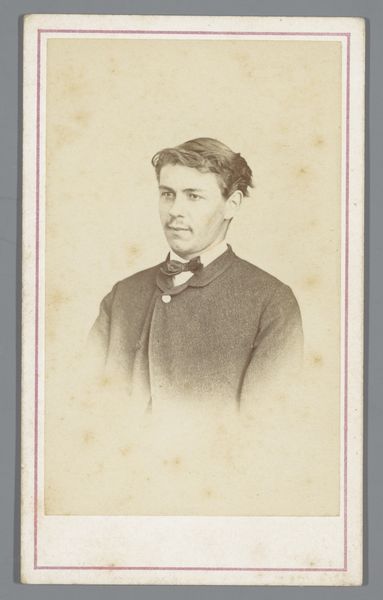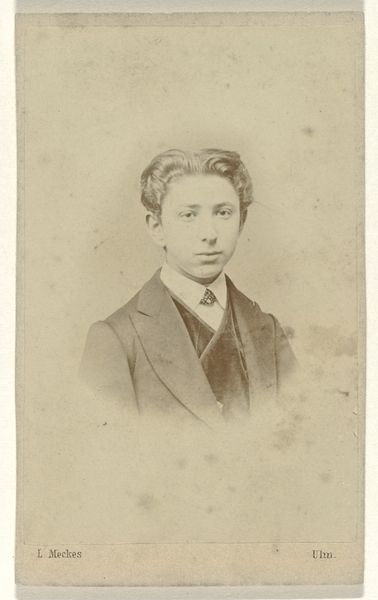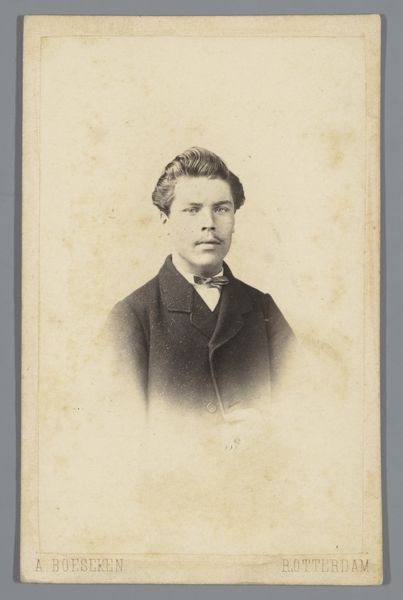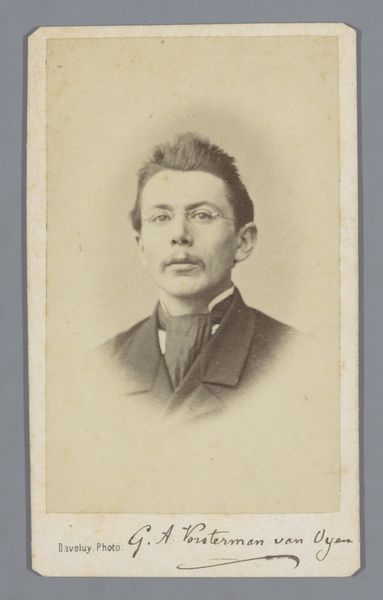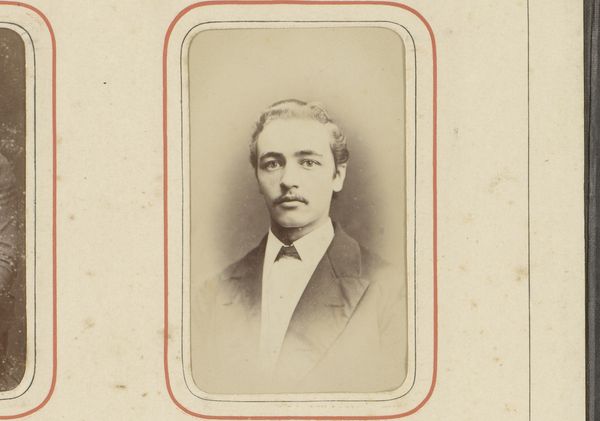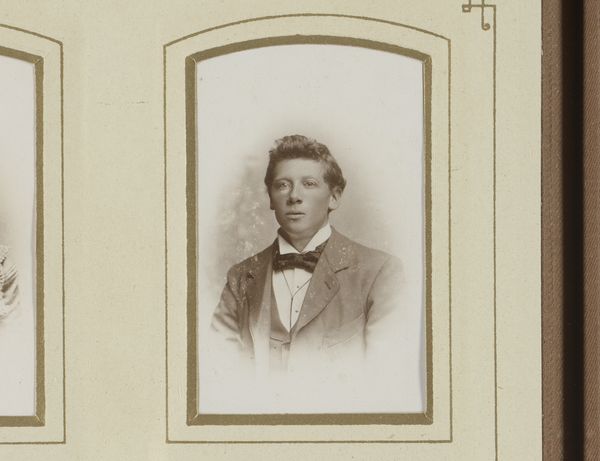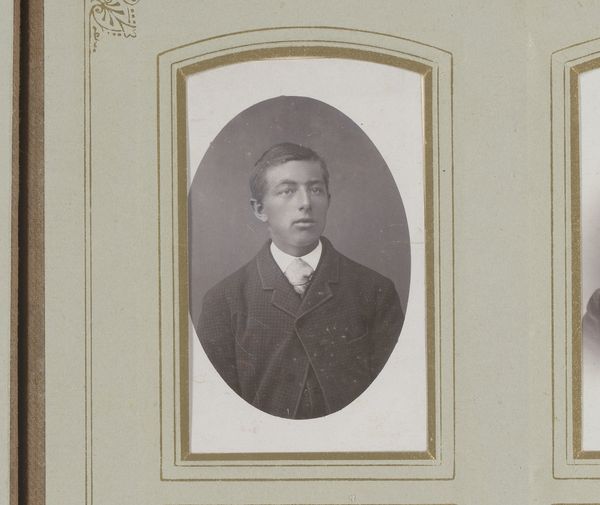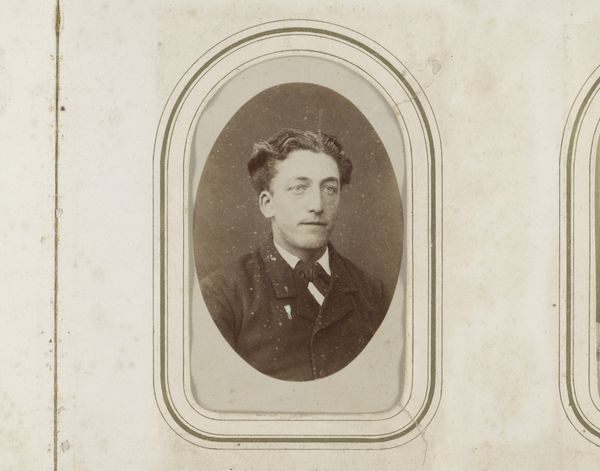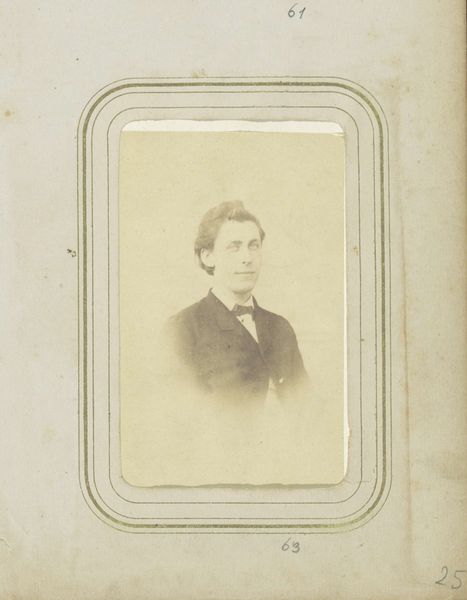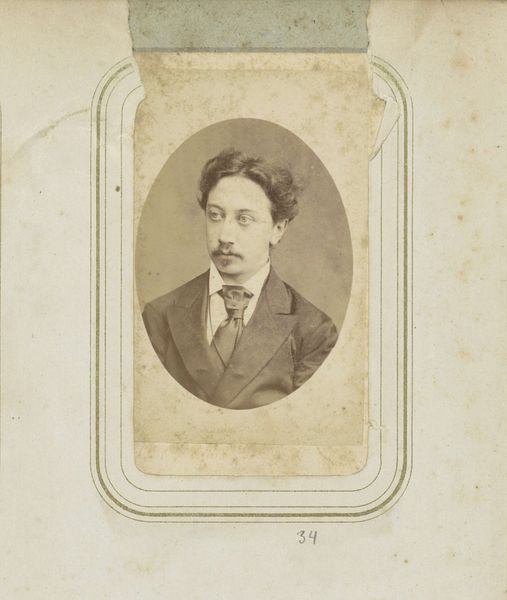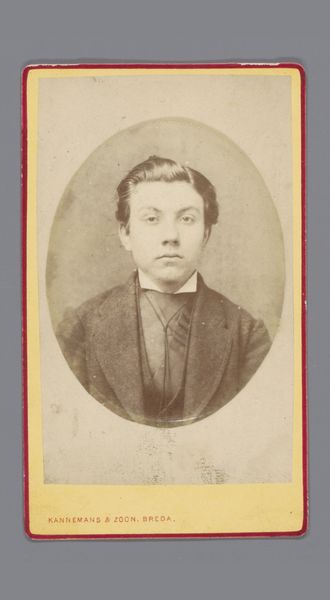
photography, gelatin-silver-print
#
portrait
#
wedding photograph
#
german-expressionism
#
photography
#
gelatin-silver-print
#
19th century
#
portrait drawing
#
portrait art
Dimensions: height 110 mm, width 70 mm
Copyright: Rijks Museum: Open Domain
Curator: Today, we're looking at an albumen silver print titled "Portret van een jongeman, mogelijk Hermann Moos in zijn jonge jaren," created sometime between 1880 and 1940 by O. Lauer. Editor: It's incredibly delicate, almost faded, which gives it an air of poignant fragility. The oval vignette further softens the image, focusing solely on the young man's serene expression. Curator: Indeed, the choice of gelatin silver print is crucial. These photographs, due to technological advancements in the late 19th century, offered better stability than earlier photographic mediums. They were often made as *carte de visite*. Editor: Speaking of medium, note how the monochromatic palette enhances the lines of the face, especially in the sharp contrast created between the light catching on his cheekbones and brow. Curator: Understanding that portraiture served specific social functions during this period is key. Portraiture functioned both as a form of record-keeping and of conveying respectability or aspirations. For Jewish communities facing increasing prejudice and persecution, documenting identity and ancestry through portraits took on greater significance. Editor: A formal perspective reveals much in terms of composition, the symmetrical placement of his suit collar mirrors his balanced expression. Also note that this balanced symmetrical expression reinforces a message of reliability or poise. Curator: This portrait likely reflects a specific moment in Hermann Moos' life, maybe around a time of political upheaval or antisemitic attacks. Such visual materials serve as anchors to memory, preserving a piece of someone's past while challenging prevailing cultural narratives that sought to diminish minority groups. Editor: Looking closely, the texture is remarkable. The subtlety reminds us that photography isn't only about capturing what exists but manipulating tone and depth, as any good etching would achieve. Curator: Thinking about it, these types of portraits offered dignity. And despite time, despite everything—the young man returns our gaze directly, offering an intense but respectful message that continues to cut through the years. Editor: The close looking allows one to explore the emotional content embedded in even what seems on the surface to be a simply stated piece of photography. It provokes thoughts on visual language and representation, on what survives over long durations.
Comments
No comments
Be the first to comment and join the conversation on the ultimate creative platform.
